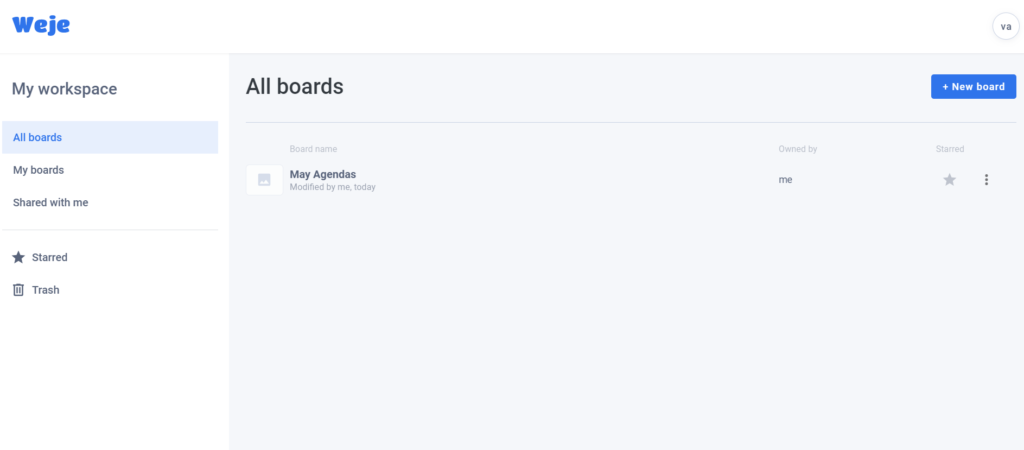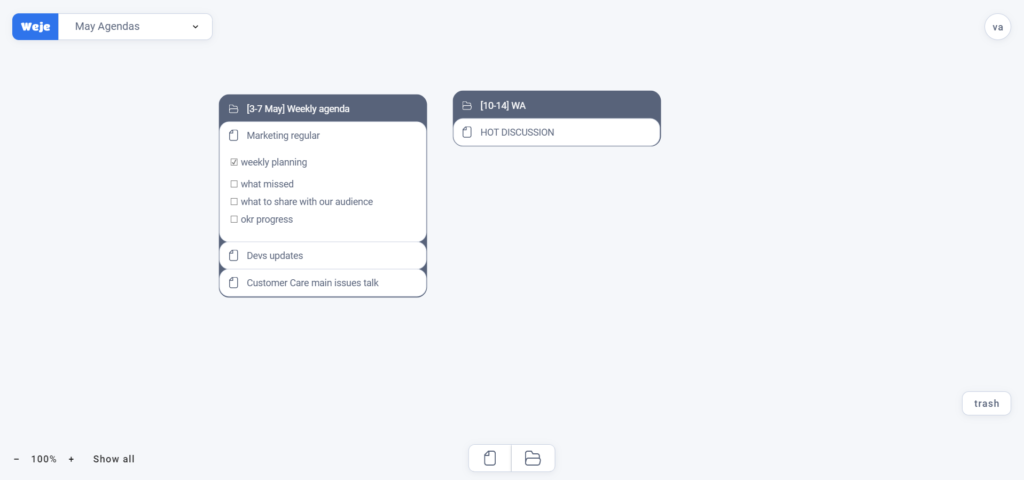Smart thoughts tend to come to us suddenly. And often – at the wrong time.
In the history of mankind, a great many brilliant ideas have never been embodied due to the fact that they quickly “flew out of head.”
Notes allow you not only to save important thoughts, but also to correctly formulate them, edit them, and quickly publish them on social networks. And also share ideas with colleagues and work together on them.
Fleeting thoughts, theses, results of negotiations, drafts of an article or report, presentation script, to-do list, etc. – all this will not be lost if recorded using a smartphone or tablet. And this can be done at any time, anywhere and under almost any circumstances.
What are meeting notes?
Meeting notes are most useful when written during the meeting and are easy to find afterwards. Meeting minutes are important for documenting what discussions and outcomes were generated in a given meeting. For periodic regular meetings, one option is to rotate responsibilities to take notes each week or period. It will change us a bit and expand responsibility so that one person will not be overwhelmed.
If the meeting is ad hoc, you can ask volunteers to take notes. Chances are, the person willing to volunteer to take notes attaches the same importance to notes as you do, and probably wants to have something to refer to after the meeting.
As you work with a variety of people in your organization, you will learn who the good, considerate, and attention-to-detail note-taking people are, and you can involve these people to help you when you need all your mental capacity to focus on facilitating the meeting.
The only really important things you should write down during the meeting are:
- Solutions
- Action to be taken: who will do it and when to do it.
It’s pretty easy to write it down, even if you’re in a meeting. One A4 size was usually enough for a typical meeting day. Now you can open any app or canvas on the web and sort your notes on the logical topic parts immediately.
Writing them down actually helps your brain confirm the decision/action required as being completely understandable and appropriate.
Not every meeting is necessary to take notes, but if you are making decisions, assigning tasks, or working on something particularly important, taking notes in the meeting is just good practice. Ideally, meeting notes are written during the meeting, editable by all attendees, and easy to find thereafter.
How to make an easy meeting minutes template?
The template is an attractive, professional and thoughtful option. It provides a clean table-based look and feel for both easy reading and easy scanning. The template starts with basic meeting information such as title, facilitator, date, time, and place. In the next section, you describe the purpose of the meeting. This is a key part of the agenda, allowing all participants to have a clear understanding of the purpose of the meeting. Usually one or two sentences are enough if it is concise.
In the third section, you can list the meeting attendees along with their department, email address, and phone number. Of course, the fields are optional, depending on the business and your company. Next, you will list the meeting agenda items with topic, owner and time. This again allows participants to prepare for their part of the meeting. You can also follow your meeting by listing the time allotted for each topic.
Finally, you will complete the preparation section. You should include and attach elements such as documents, diagrams or emails as examples, and who is responsible for providing each one.
Each section of this agenda template serves a different purpose and allows you to gather people and materials and set expectations for your meeting.
8 useful tips for effective note strategies for business meetings
Effective meeting notes taking is a skill that takes time to master. And if you are a player in the corporate or business world, you will undoubtedly have to master this skill, because you will need to attend business meetings where taking notes is very important.
Even if you’ve taken notes for personal use multiple times, that doesn’t mean you’ll be good at taking notes at business meetings. This is because taking notes in business meetings requires a very different skill set. For example, in your personal notes, you can use abbreviations and transcripts, or even drawings that only you can interpret. Your personal notes should not follow a pattern or show any considerations to another reader. And they don’t have to be neat because they are for your use only.
Here are effective note-taking strategies and tips for business meetings:
1. Use Weje
Weje offers flexible cards, sticky notes and lists. Why not them use for meeting planning?
Follow easy steps on how to organize the process:
- Create a board for agendas: e.g. all agendas for the 2021 year, [month] agendas, or for big agendas with sum-ups – a separate big board.

2. Make lists with cards where you’ll conduct your planning. E.g. we’ve got a board for different departments. You can make a regular template with a checklist of usual questions. Then, add your notes of what covered more and summarize.

2. Use a pen and paper
You can bet we’re in the world of tablets, laptops and PDAs right now. But the truth is, using pen and paper is less intrusive and makes it easier for you to maintain eye contact with the person speaking. In addition to creating a wall between you and the person you are talking to, digital devices give the impression that you are working on something else or communicating with someone, even if you are not. And it’s even easier to get distracted when using the pens and papers.
3. Learn and use shorthand
It is not true that the shorthand is just for secretaries and journalists; it’s still relevant for taking notes at business meetings, especially when you’re listening to a speaker who speaks very quickly. Learning shorthand is not as difficult as you might think. Just search the Internet for helpful and relevant resources and you should be able to master them within a couple of months easily.
4. Just highlight key points
You will get bored with taking notes if you try to screw things up. When taking notes in a business meeting, listen to everyone, but write down only the important and important things. It goes without saying, but you don’t need to write down a short joke that was hacked during the meeting. This tip is very efficient in case of using it correctly and of course on time.
5. Prepare a written report immediately after the meeting
As stated earlier, a business note serves as a historical document and reference information, but only when it is turned into a comprehensive text. You, of course, cannot expect the company to keep the draft paper that you wrote during the meeting; you need to prepare a neatly written report that will be more presentable and understandable to any reader. Make your reports ready just after the meeting so as not to forget or to miss anything important.
6. Listen carefully
When a business meeting begins, your dual role begins: listening and taking notes. Although doing both together is difficult and seemingly unrealistic, if you want to be better at one, you need to listen. If you can listen to every important detail without missing a single one, you can always include what you missed by writing later. So just listen to what is said very carefully.
7. Write down everything about the meeting
When taking notes at a business meeting, do not forget to add all the necessary details about the meeting; towards discussions. These include the type of meeting (scheduled or emergency), the purpose of the meeting, the date and time of the meeting, the name of the person who called or presided over the meeting, the names of those present, and any information regarding the next meeting. These details make your meeting notes complete. You don’t want people to start asking who said what date or time the meetings were held.
8. Read carefully
Even if your goal is to provide accurate information about a business meeting with your note, being free of typographical, grammatical and spelling errors is also very important. If your notes are filled with these errors, you will undermine your reputation as a reliable information provider. Thus, read everything carefully and think thoroughly in order not to miss any important information during making notes.
Making notes is important not only as a recording to look back on what happened but also as a communication tool to help those people who want to stay in the loop. Good meeting minutes will tell you not only what has been decided, but also what they need to achieve. Write down any relevant discussions or ideas and who said them. If decisions have been made or action elements have been identified, make sure you write down the content of the decision or problem and who is responsible for it. That is how to take notes in a meeting. Don’t forget to try Weje, you can see that from 4th to 8th strategies can be covered in one flexible board and easily shared.
However, meeting notes serve a completely different purpose because they are written for others and they serve as historical documents that mark decisions and actions made or discussed at a business meeting. If you need to take notes at a business meeting. The following tips will help you use them effectively. When you’re able to do all of these, you’ll be taking high-quality meeting notes.
Published: May 28, 2021




